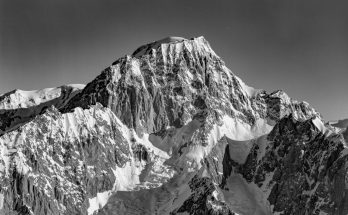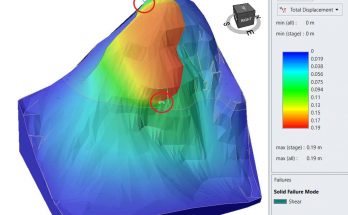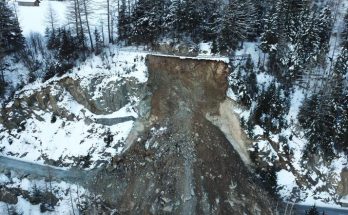Clément Michoud
Supervisors: Prof. Dr. Michel Jaboyedoff, Andrea Pedrazzini
Spaceborne Differential Interferometric Synthetic Aperture Radar (DInSAR) is a remote sensing technology based on the measure of the phase of a radio wave reflected by ground scatterers. Calculate the phase’s difference of those ground scatterers detected by two radar satellite’s acquisitions in two distinct times allows, in theory, to detect the small deformations of the topography which occurred between the temporal baseline. Limited by atmospheric artifacts and decorrelation problems (changes in electrical properties and moisture of the soil), DInSAR is more effective in urban, arid or rocky areas than in forest or cultivated areas. But it can detect quasi vertical movements covering very large areas in a continuous way. That is why DInSAR can be considered as an efficient tool to detect and monitor slope instabilities.
This Master Thesis in Engineering Geology was done in the Institute of Geomatics and Risk Analysis of the University of Lausanne to bring theoretical and technical requirements to use DInSAR technology in studies of slope surface processes.
The La Frasse landslide is studied for this work. It is located in the State of Vaud (Switzerland). With a length of 2 km, a larger of 500 m, his surface of rupture is located between 60-10 0m of depth. With high velocities (presently at 40 cm/y in the active lower part), La Frasse’s landslide is in highly hazardous area according to the Swiss legislation. According to Varnes classification, it is a complex slide composed of tertiary flysch material and flowing over flysch and limestone bedrock. The landslide area is occupied by forests, pastures and some habitations. Today, the instability is maintained by the river “Grande-Eau” erosion of the foot.
To acquire the Radar dataset, the project « Differential Synthetic Aperture Radar Interferometry (DInSAR) in monitoring large landslide in La Frasse (Vaud, Switzerland) » was concluded with the European Space Agency. To validate DInSAR results, we dispose of data provided by an optical detection of ground movements system, with prisms on the landslide localized every 2h with a Laser station (Robovec™ System, Soil Mechanics Laboratory, Swiss Federal Institute of Technology of Lausanne).
First of all, two interferometric pairs are constructed with data provided by the satellite Alos. The large wavelength (24 cm) of ALOS’ PALSAR sensor gives results in the foot of the landslide, where the movements are the most important. Afterwards, fifty-three interferometric pairs are constructed with twenty-two images acquired with the European satellite Envisat. With the lower wavelength (5.6cm) of the Envisat’s ASAR sensor but the higher number of interferograms, the analysis provides the mean velocities on landslide’s scaterrers by using the SBAS methodology.
The results of this study are coherent with the amplitude of the deformations monitored by Robovec™. Moreover, the computation of the mean velocities shows that today, total displacements are measured in the active lower part of the landslide; the data complete Robovec™ results. But the accuracy of the measured displacements and the number of scatterers could be improved by synthetizing the topographic phase from an aerial laser scanning DEM instead of the STRM DEM. The number of scatterers can also be increased by installing corner reflectors in the fastest-moving area of the landslide.
Featured image: Mean annual displacement velocities of scatterers detected by SBAS-InSAR between 2002 and 2008 (hillshade: copyright swisstopo)



